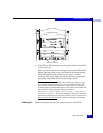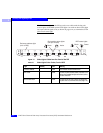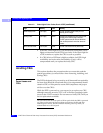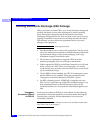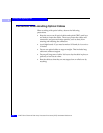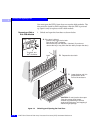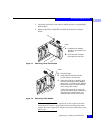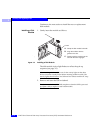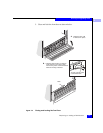
3
3-6
EMC Fibre Channel Disk-Array Processor Enclosure (DPE) Hardware Reference
Servicing and Upgrading a DPE
Avoiding Electrostatic Discharge (ESD) Damage
When you replace or install CRUs, you can inadvertently damage the
sensitive electronic circuits in the equipment by simply touching
them. Electrostatic charge that has accumulated on your body
discharges through the circuits. If the air in the work area is very dry,
running a humidifier in the work area will help decrease the risk of
ESD damage. You must follow the procedures below to prevent
damage to the equipment.
Read and understand the following instructions.
• Provide enough room to work on the equipment. Clear the work
site of any unnecessary materials or materials that naturally build
up electrostatic charge, such as foam packaging, foam cups,
cellophane wrappers, and similar items.
• Do not remove replacement or upgrade CRUs from their
antistatic packaging until you are ready to install them.
• Gather together the ESD kit and all other materials you will need
before you service a DPE. Once servicing begins, you should
avoid moving away from the work site; otherwise, you may build
up an electrostatic charge.
• Use the ESD kit when handling any CRU. If an emergency arises
and the ESD kit is not available, follow the procedures in the
“Emergency Procedures (Without an ESD Kit)” section.
• An ESD wristband (part no. 129002319) is supplied with your
DPE. To use it, attach the clip of the ESD wristband (strap) to any
bare (unpainted) metal on the DPE enclosure; then put the
wristband around your wrist with the metal button against your
skin.
Emergency
Procedures (Without
an ESD Kit)
In an emergency when an ESD kit is not available, use the following
procedures to reduce the possibility of an electrostatic discharge by
ensuring that your body and the subassembly are at the same
electrostatic potential.
These procedures are not a substitute for the use of an ESD kit. Follow them
only in the event of an emergency.




